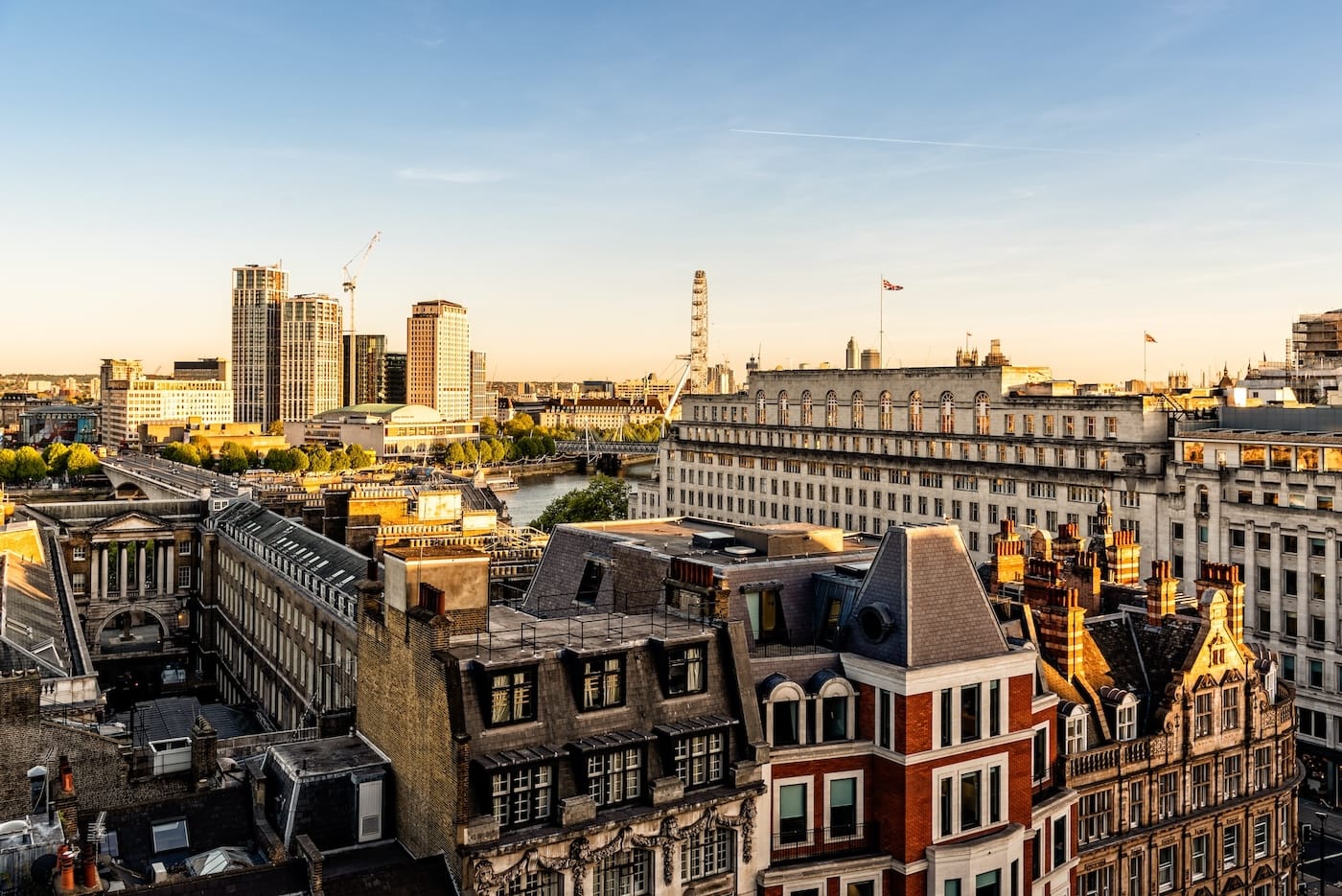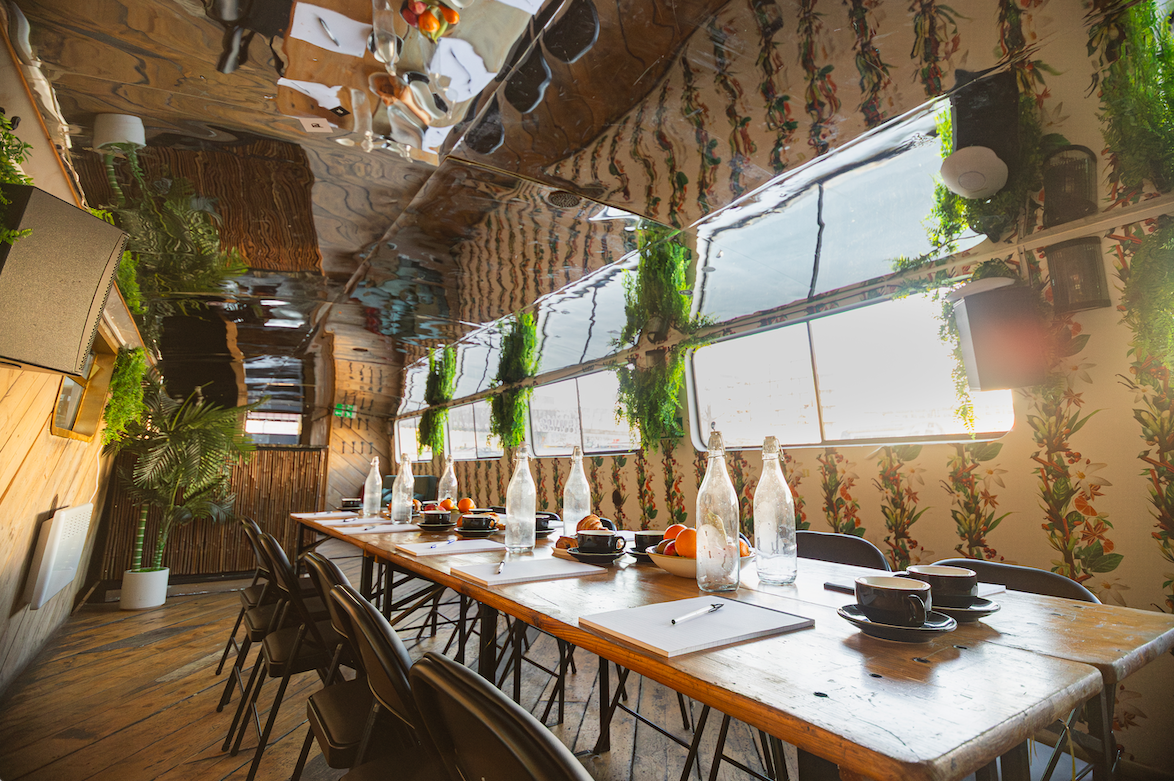It's up to all of us in the industry to work together to transition the events sector to a more sustainable future, but it can be difficult to know where to begin. While planning and reflecting on our 2021 edition of EventLAB, we found plenty of opportunities to learn from others in the industry and take forward new ideas, which we've delved into below. We hope the insights from our process are helpful in building sustainability into your own events.
Read on for what we did, what we learnt, and what we'll do differently next time to reduce our events' impact on the planet.
Table of Contents
What We Did
- Going Hybrid
- Promoting Sustainability on Panels
- Reducing Waste
- Our Suppliers
What We Learnt
What We'll Do Next time
The Background
In November 2021, Hire Space hosted the fifth edition of EventLAB, a discovery series for event professionals, at Central Hall Westminster and on Arena. Sustainability has always been a key consideration at EventLAB, and in the wake of COP26, and after the UN declaring 'code red for humanity' earlier in the year, we wanted to make sure that minimising our environmental impact was at the top of our agenda.
What we did
Going Hybrid
Virtual and hybrid events have become fixtures of the event calendar over the past 2 years, but calculating their impact requires taking a broader scope of your emissions. Taking into account aspects such as travel, catering, filming, and AV, hybrid events tend to have a lower footprint than in-person events.
As well as being aligned with Covid precautions, taking EventLAB hybrid on Arena had the added benefit of allowing more people to tune into the sessions without contributing to emissions by travelling. It also helped cut down on the amount of waste produced onsite and kept down the number of badges we printed for delegates, while ensuring everyone was still able to participate in the sessions.
With this in mind, we'll be evaluating our future events to see whether a hybrid format is appropriate for the content, and recommend doing this for your own events. To see how hybrid events could work for you, check out our ultimate guide to going hybrid.
However, there's a growing awareness of the environmental impact of digital events, with a significant amount of energy being required to power the tech, video streaming, and screens involved in providing content to virtual viewers. Our top takeaway in this area is that it's important to use a production team whose values and equipment are in line with your sustainable objectives. You can read more about our production team below, and what to look for in your own suppliers.
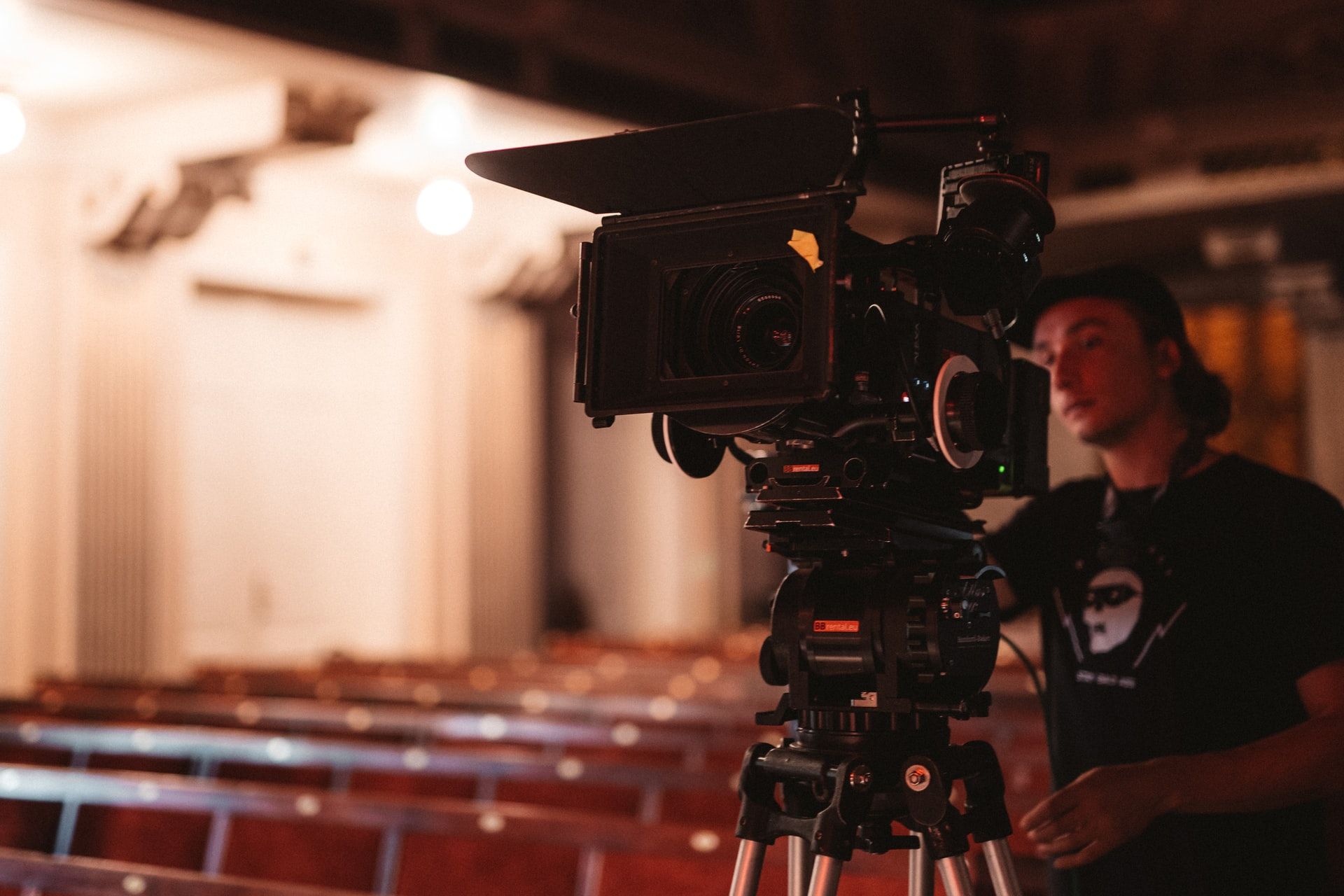
Promoting Sustainability On Panels
Several of our sessions were concerned with a sustainable transition for the industry, with the panel 'What Does Code Red For Climate Change Mean For Event Organisers' providing practical advice for event planners on reducing their environmental impact, while Mark Bannister, Technical Director of COP26, delivered the insightful talk 'Case Study Of A Carbon Neutral Event'.
These sessions provided really useful takeaways for attendees to implement in their own events. Key to the discussions was an emphasis on going into each project with a solid plan for reducing your impact, whether through choosing different materials for the branding and event set-up, or finding ways to recycle and reuse the materials left over after the event.
All of our speakers were adamant that planning is the most fundamental aspect of staging a genuinely sustainable event: Mark Bannister spoke about working with suppliers to find out what they already had available from an early stage, so that these items could be factored into the event plan, while Ellie Ashton-Melia, Communications Lead at isla, recommended looking beyond your suppliers to their supply chains to help you identify genuinely ethical, sustainable companies to partner with.
If you missed the sessions, check out the recordings and write-ups now!
Reducing Waste
Waste contributes significantly to the footprint of events, from paper leaflets to plastic cutlery stacking up to create a considerable amount of landfill. At our stand for Hire Space 360, we used iPads instead of printed brochures to show our products to attendees, and the majority of our signage at the event was either digital or reusable. Our caterers used compostable plates and cutlery, and we served water in glasses from jugs throughout the day to reduce demand for plastic cups and bottles.
Another aspect to consider when planning your events is the impact of giveaway items such as pens, bags, and notebooks which are often distributed at events. While delegates may expect to receive these items at meetings or conferences, pre-event communication goes a long way in encouraging them to bring their own writing materials. If you do choose to provide these, consider making notebooks smaller to cut down on waste, and unbranded so that they can be reused at future events, and providing pens for delegates to borrow, rather than keep.

Our Suppliers
As per our panellists' advice, it was important to us that our venue, suppliers, and catering partners shared our commitment to reducing the carbon footprint of the event. We chose our partners based on several factors, opting to keep them local to cut down on transportation emissions, and as waste-free as possible. Over the course of planning the event, they made recommendations for more sustainable options we could implement, which drove home to us the value of having suppliers who are on board with your vision and goals.
We found some fantastic suppliers to deliver our objectives, whom we're looking forward to working with again. Check them out below.
The Venue
Your venue will contribute a sizeable proportion of your emissions (unless it's an outdoor event, of course!), so it's vital that you assess whether its sustainable objectives align with your own. Most venues have a sustainability policy, which you should be able to ask for, and this should provide a useful reference point for whether your goals line up. For some useful tips for venues, check out our blog from last year's EventLAB on investing in your sustainability journey.
We chose Central Hall Westminster to host this year's show because of its excellent track record with greening its systems - a record that's seen it recognised with a Green Tourism Gold Award, and an EcoSmart Gold Venue Award in recent years.
Here are some of the steps the team at Central Hall Westminster have taken to reduce their footprint:
- Replaced over 1000 of the venue's lightbulbs with less-intensive LED bulbs.
- Brought in a new blade faucet system in the bathrooms, which saves up to 50% of water.
- 70% of waste is recycled, and as much as possible is reused in-house.
- Changed its default pension provider to be more environmentally friendly.
- Founded a Green Team to make suggestions and recommendations on areas of sustainability that the venue could improve on.
Our top takeaway is to make sure you set out in advance any values you're not prepared to compromise on, whether that's a strong commitment to reducing waste, more sustainable power, or public transport links to cut down on emissions. Take a look at our top sustainable venues for some ideas of venues that are making the Green grade.
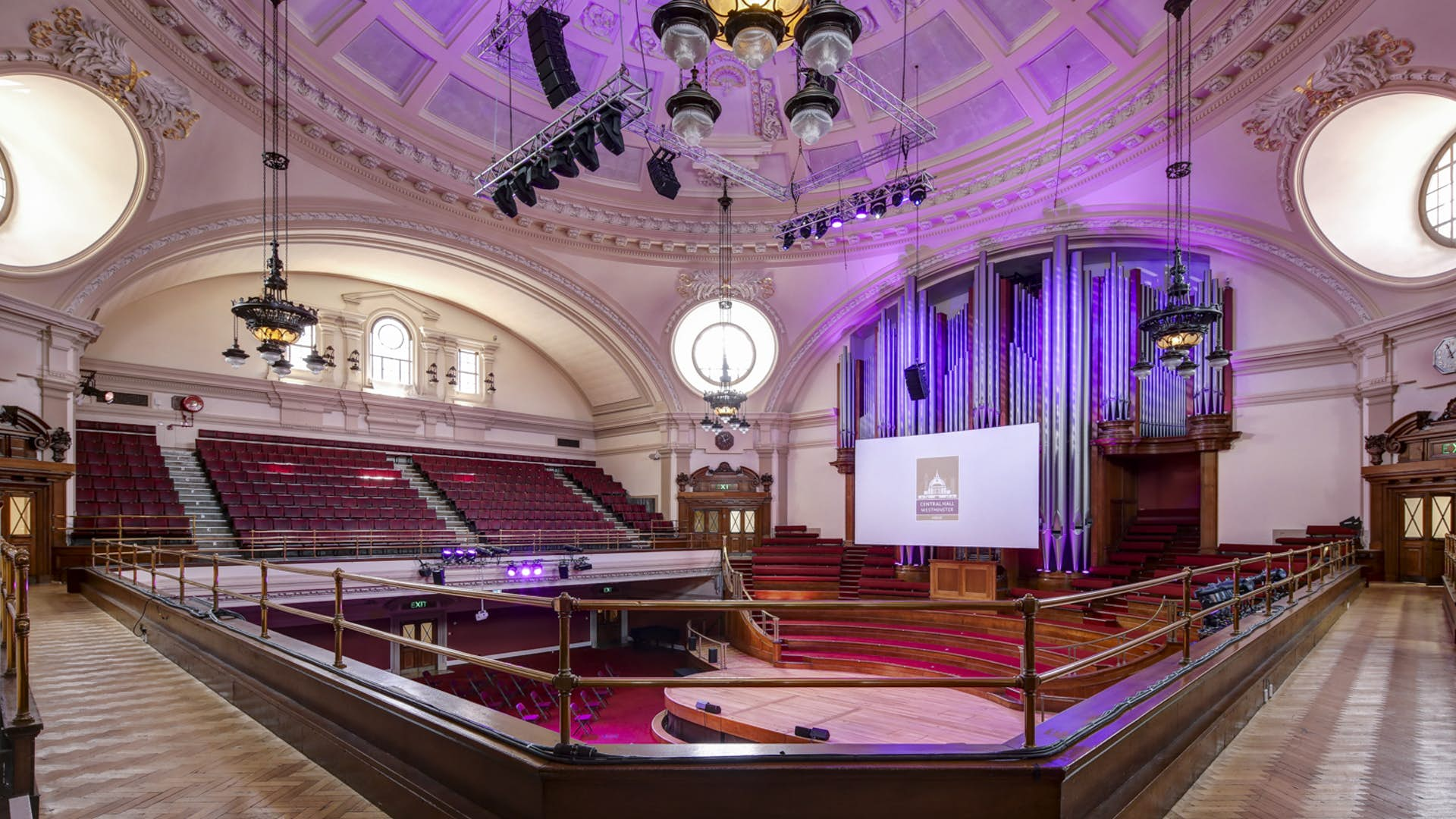
The Catering
Catering is always a difficult balance to strike in events, but with the average event wasting between 15 and 20% of food provided, it's a key culprit in bumping up your footprint. The events world is, by nature, unpredictable: delegates withdraw last minute, or extras register on the day, but it helps to plan for contingencies. At EventLAB, we required attendees to sign up for the lunch provided, and allowed people to upgrade their tickets on the day to fill spaces of delegates who couldn't make it. This cut down significantly on the waste created.
Green and Fortune are the caterers of choice for Central Hall Westminster, and it's not hard to see why a sustainability-conscious venue would partner with them. They aim to produce the correct quantities of responsibly-sourced food for every event, and serve their dishes on ceramic or bamboo plates to reduce waste.
Their menus detailed exactly what steps they had taken to ensure their dishes were sustainable, from cutting down on food miles, to using parts of ingredients that are usually discarded, to keeping the menu as seasonal as possible. Dishes served at EventLAB included vegan beetroot burgers, British barley risotto, cod cheeks (underused cuts of the fish), and planet-friendly apple and coffee mocktails (made using mint stalks, coffee grounds, and lemon and lime peel from their bars that would otherwise be discarded).
If you choose to focus on cutting down on food waste, we recommend looking for caterers who have a specific commitment to this: always ask to see a supplier's sustainability policies before you engage their services.
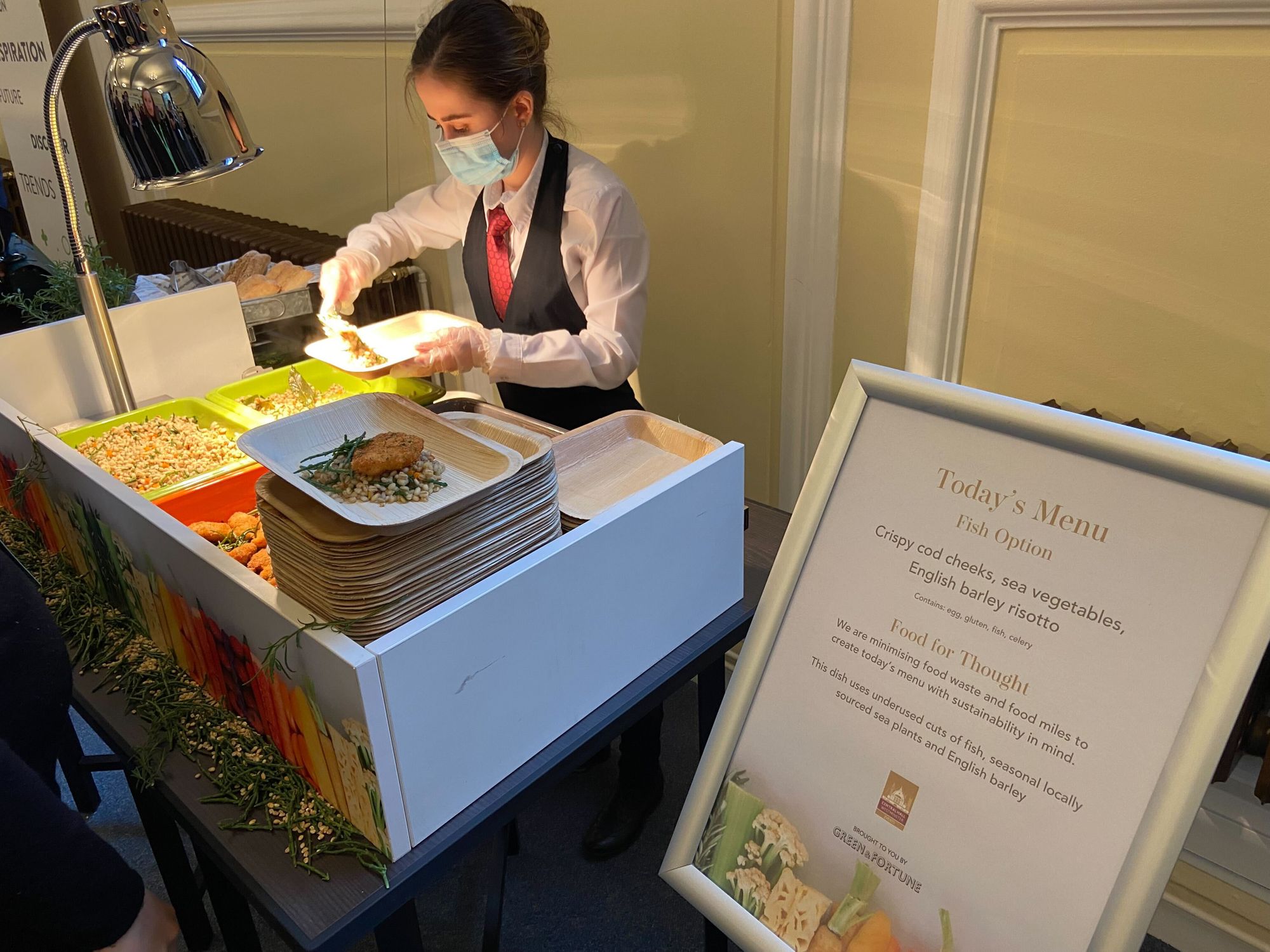
The Branding
Event branding is an area which has historically produced significant waste, with print often being synonymous with single-use. The most planet-friendly option is using what you already have, but advances in technology and printing processes mean that there are options for creating sustainable assets where it's not possible to reuse old ones.
B2 Events produced our incredible branding, and as members of isla, the sustainability advisory body for the events industry, they're constantly looking to improve their impact on the environment. From printing on boards made from salvaged plastic kitchenware, to using a modular aluminium system as support, which can be used for any set up (they describe it as Lego for the events industry!), they aim to offer sustainable solutions in every project.
We left out any mention of dates or locations on the vast majority of our branding so that it can be used year after year for future EventLABs, which works well if you run annual or repeating events.
If your company changes branding between events, it could be worthwhile rethinking your approach to keep your impact lower. Otherwise, investing in sustainable materials for your branding goes a long way towards reducing your event footprint, and isla has recently released a guide to sustainable printing which is a valuable resource for event organisers.
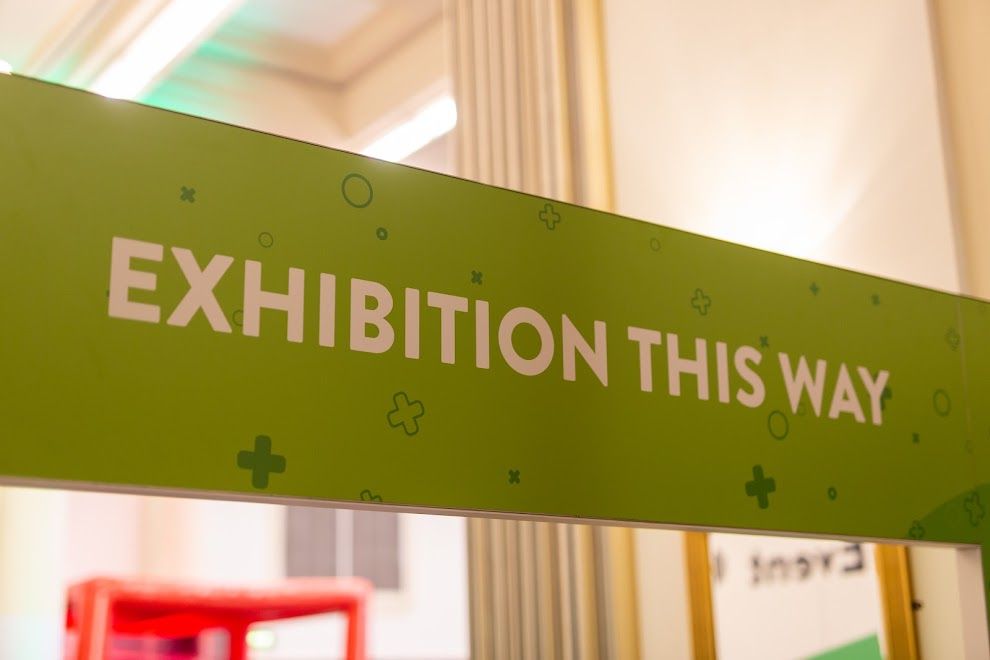
Production and AV
AV is often overlooked when setting sustainability objectives, but the energy required to power tech like tablets, projectors, and digital screens, contribute significantly to an event footprint. As we hosted EventLAB as a hybrid event, a significant part of our footprint was associated with the capture and streaming of the live sessions.
Fortunately, it's possible to find suppliers who are consciously tracking and reducing their own impact. White Light, who managed the AV and production of EventLAB, invest in updating their equipment to lower-impact technologies like LED, leading to energy savings of up to 34% year on year. White Light also provide organisers with the option of tracking how much energy their services use during the event, which can help to inform your targets and objectives for future events.
Whatever format of event you're planning, the chances are that you'll require some form of AV or production, whether for in-person registration, speaker slides, or digital signage, or virtual live-streaming. It's best to choose your AV supplier with your sustainable objectives in mind, as bringing these to the table from the outset ensures you have the same guiding values.
Lanyards and Badging
Badging is generally a crucial element for an event with an in-person aspect, and while QR codes on delegates' phones go some of the way, they won't cut it at events where you want to have names on display. The positive news is that sustainability in the badging sector is high on the agenda and becoming more prevalent, with the majority of suppliers offering a more planet-friendly option than PET badges.
Identilam provided our fantastic lanyards and badges for the event, and we opted for durable recycled plastic as a material for both badges and lanyards from their range of sustainable and recyclable items. Again, we removed any mention of dates, and kept the cards free of information, to allow us to reuse them in future. We then printed the badge labels onsite when delegates arrived, so that no labels were wasted if attendees didn't show up. These can contain all of the information you need, including artwork, QR codes, and sponsor logos, so that the card attached to the lanyard remains blank.
If your events are sponsored by different companies each time, it may be safer to keep your lanyards plain and find opportunities to promote your sponsors on the printed badges. This will mean that you can reuse the same lanyards over and over, without having to discard them due to outdated branding.
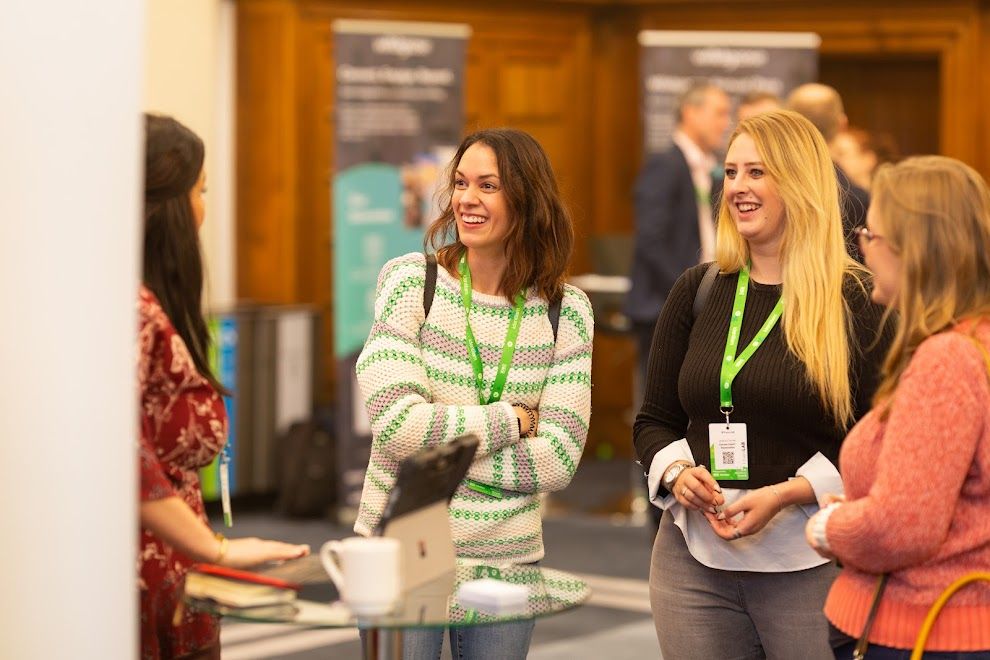
What we learnt
After EventLAB we had some great feedback from our delegates on the reusable badging and sustainable catering, but we learnt a lot from our partners and panellists on how to hold ourselves more accountable for our emissions.
Here are some of the things we'll be taking away:
- To accurately keep track of your footprint, you have to factor in your suppliers' emissions. isla's Ellie Ashton-Melia spoke at the event about the three levels, or 'scopes' of emissions, ranging from direct company emissions to the transportation of items in your suppliers' supply chain. It's important to factor this in as far as possible to get a more accurate overview of your event footprint. Members of isla can use the organisation's measurement software to help track their emissions.
- Setting sustainable objectives out in your RFP guarantees that all suppliers will be on board with your commitments from the start. Whether you're choosing to go completely carbon neutral, or just cut down on plastic, it's vital that your suppliers know this from the start and can factor it into quotes and their delivery plan, including ensuring their own supply chain aligns with your event objectives.
- Choosing to focus on one area of your footprint (such as reducing plastic) is often more effective than trying to do everything at once. Our panellists advised that small, focused changes can have a bigger impact on changing the behaviour of the public, and lead to more widespread awareness of your goals. When attendees see policies in action, particularly with clear signage and explanations, they are more likely to engage with them and even adopt them in their own companies.
- We've also since taken part in workshops run by Reset Connect on calculating the footprint of events and organisation, which has helped us to identify our key areas to cut down on - chiefly energy use, supplier travel, and materials. These are areas that we'll be focusing on for the next edition of EventLAB, and aiming to reduce year-on-year.
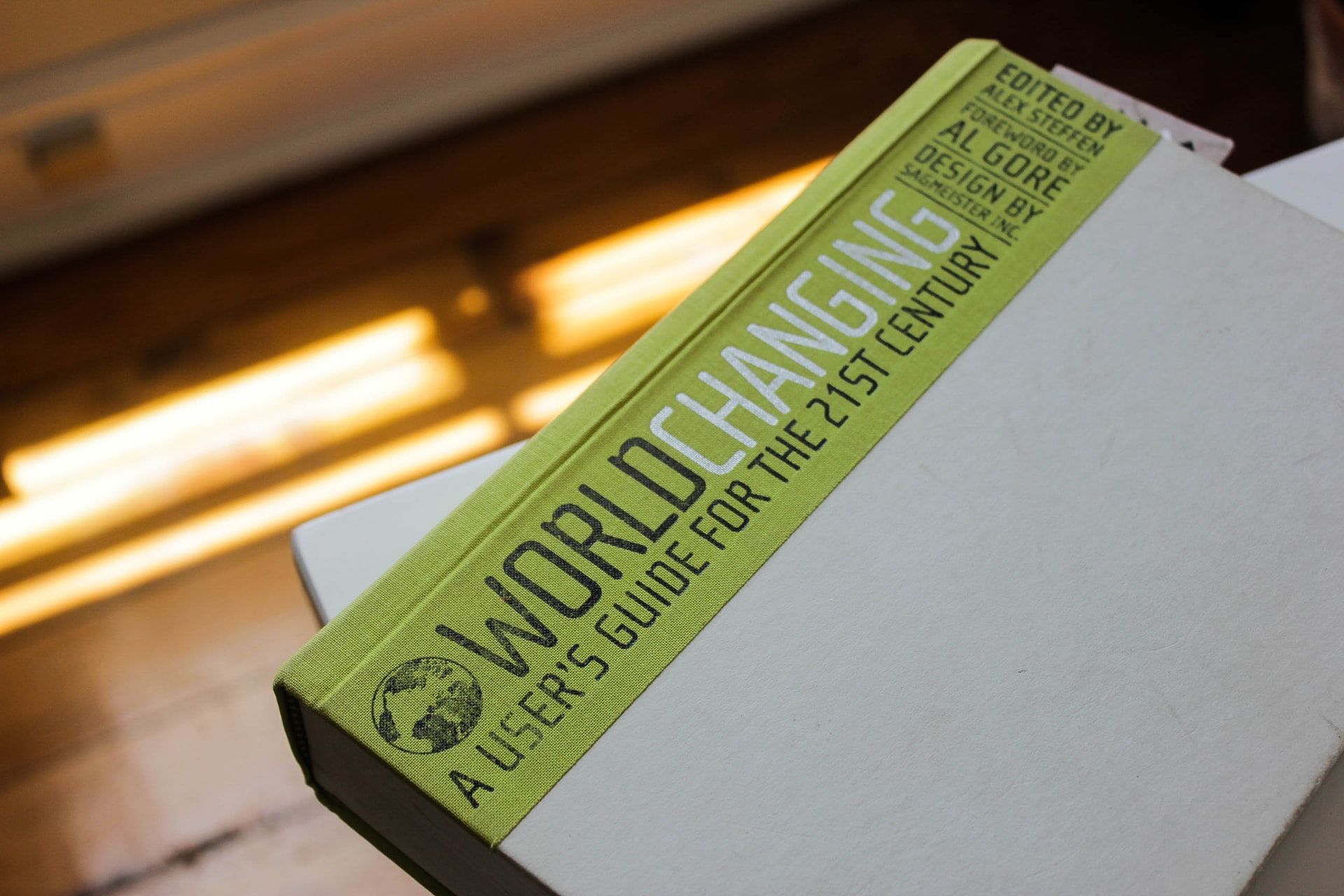
What we'll do next time
We're well set up with our branding, lanyards and badging for the next time that EventLAB comes around, but there's plenty more for us to turn our attention to. Here are some of the areas we'll be looking to improve on for future events.
- Reducing transport emissions by asking delegates to travel by public transport wherever possible, choosing to take our events hybrid where possible, and keeping all our suppliers as local to the venue as we can.
- Tracking and analysing the emissions associated with our business and the events we run, and working with venues and suppliers to reduce energy use and unnecessary journeys.
- Continuing to reduce waste produced on-site and in the lead-up, from food to packaging, and ensuring the suppliers we work with have the same commitments to minimising their impact.
Sustainability doesn't have an endpoint: there's always room for improvement, and the industry is getting behind initiatives to bring sustainability to the fore. There are measures we can all take to become more conscious of our impact, and we're on the lookout for others in the industry sharing tips on more sustainable ways to run events.
Finally, it's important to remember that even small changes can make a significant difference when done on the scale of a large event. You don't need to do everything perfectly to make a positive impact, and showing your delegates the steps you're taking can encourage them to do the same in their own businesses.
If you're looking for more advice and practical guidance on making your events more sustainable, check out Reset Connect's event sustainability workshops, geared at giving eventprofs a cross-sectional understanding of how to reduce and mitigate their event footprints.
If you'd like to find out more about EventLAB and this year's panels, check out the session recordings on our blog, and the lowdown of the event.
Author

Jessamy Cowie
Jessamy channels her passion for sustainability and cultural events into shining a spotlight on innovation and inspiration in the events world, and heading up Hire Space's sustainability committee.

